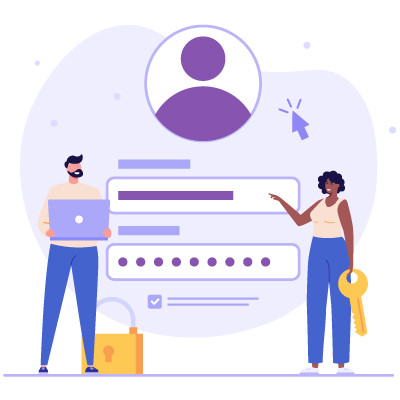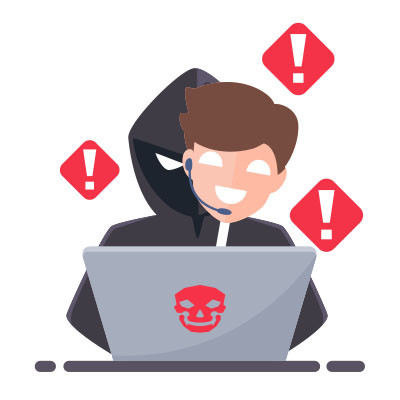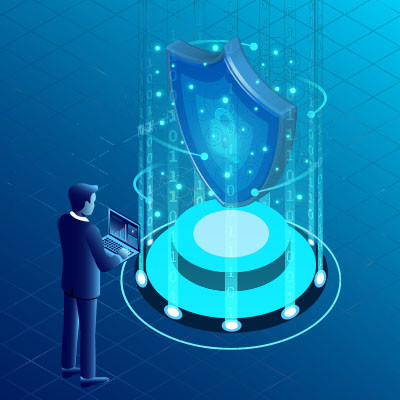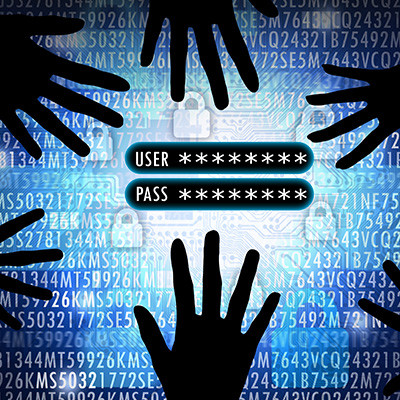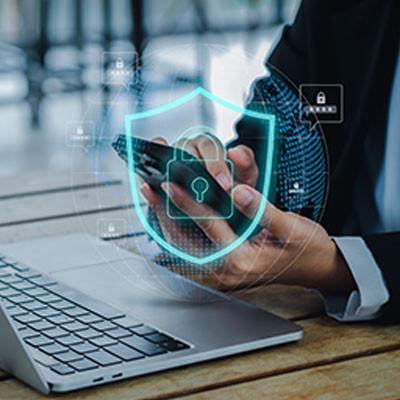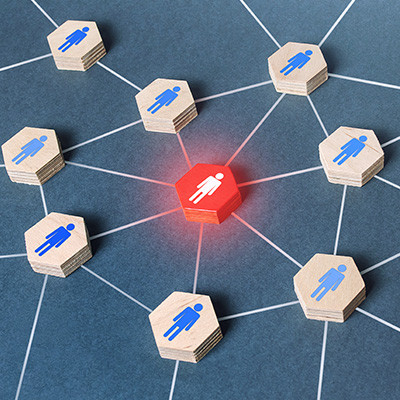Telesys Voice and Data Blog
All it takes is one oversight to potentially undo any benefits your cybersecurity protections and other best practices may deliver. For instance, even if you have things like multifactor authentication in place, a phishing scam or even some malware varieties could potentially give an attacker access to your email… and all the data your messages contain, just sitting in your inbox.
Picture this scenario: while going about your daily routine, an email lands in your inbox, purportedly from a cybersecurity company. The alarming claim is that you've become the target of a hacking attack. Despite lacking IT expertise and being unfamiliar with your security agency's protocols, you trust the message and promptly respond. Little do you know, the email is a cleverly disguised cyberthreat, and you find yourself ensnared in their trap.
Your business' IT security effectiveness relies heavily on how well your technology works. With this in mind, educating your staff on their responsibility to safeguard your business’ digital assets is important. Let’s explore the key priorities businesses need to consider to establish a robust security training platform that works to protect those assets.
A New Year can be about self-improvement. Most of us make lofty goals to spend more time at the gym, or to stop sneaking spoonfuls of uncooked Pillsbury Cookie Dough right out of the tube from the back of the fridge at four in the morning. Some of us accomplish our goals, and some of us have gotten really good at hiding that Pillsbury Cookie Dough wrapper in the bottom of the trash so nobody realizes it’s gone. All joking aside, it feels good to make accomplishments, and I truly hope that anything you set your mind to is able to happen for you.
If you are looking for an easy resolution that will help you sleep better at night and is extremely easy to maintain, I’d highly suggest that you prioritize your own personal cybersecurity in 2024.
It will take a little effort, but trust me, it will save you a lot of headache down the road.
I was talking to some colleagues the other day about cybersecurity and its relationship with modern everyday scams, like phone scams and similar things. In my opinion, it’s worth bundling these two topics together, and we found some interesting statistics that we’d like to share.
As the threat landscape gets more concentrated with serious cyberthreats, new next-generation firewalls (NGFWs) have been developed to help stem the tide of negative outcomes that result from cyberattacks. An NGFW is an advanced network security device or software solution that combines traditional firewall capabilities with additional features and functionalities designed to provide enhanced protection and visibility into network traffic. NGFWs are designed to address the evolving and sophisticated nature of cyberthreats, including malware, intrusion attempts, and other malicious activities.
Every organization has a lot of things that could go wrong in the course of doing business. They can run into supply chain issues, employee turnover and poor performance, natural disasters interrupting your “business as usual”, but one of the most unassuming, yet worrisome threats to your business is the cyberattack. This month, we go into a few ways cyberattacks threaten your business and how they play out to give you an idea of how to prepare.
Social media scams are fraudulent schemes or deceptive activities that take place on various social media platforms. Users of Facebook, X (formerly Twitter), LinkedIn, and dozens of others have been victims of these attacks. These scams can target users of all ages and backgrounds, and they aim to exploit people's trust, curiosity, or lack of awareness. Social media scams come in various forms, and here are some common ones.
Passwords are one of the most important parts of keeping any account secure, and if you were to gain access to these accounts, you’d have access to personal data, subscriptions, money, and even the victim’s identity. Today, we want to show you just how easy it is to steal a password and gain access to an account.
When it comes to valuable data, hackers will go out of their way to try and steal it, placing businesses in dangerous situations. In particular, healthcare data is attractive to hackers, and considering how lucrative the prospect of healthcare data is, companies need to take extra precautions to protect it. But what is it about healthcare data that makes it so attractive, anyway? Let’s dig into the consequences of potential attacks on healthcare data.
Business doesn’t always go the way you want it to, so many will turn to technology. Unfortunately, without the right strategies in place, organizations can run into problems integrating the right technology. This month, we take a look at some of the biggest IT pain points your business can face.
Ransomware is one of the more dangerous threats out there for businesses of all industries and sizes. To help emphasize just how dangerous it is, however, you have to look past the initial threat of having to pay a ransom and look at the other risks associated with it. We’re here to try to get the point across that ransomware is something your business should absolutely be taking seriously.
Any business that depends on its IT—in other words, most businesses—needs to consider the cybersecurity that is in place to protect it. Today, many businesses have started focusing their cybersecurity efforts on protecting their network from the edges, an approach that is fittingly known as edge security. Let’s take a moment to talk about the benefits that edge security can offer you.
Do you have an old Google account that you created years ago, only to replace it later with one that is more on-brand and less filled with spam messages? You’re not alone, but as you might expect, these accounts can create more problems than they are worth if you let them sit around unused for too long. Perhaps that is why Google is planning to shut down any old Google accounts that have remained dormant for the past two years.
It is the right thing to do to use technology in your business’ attempt to be more productive and efficient, but it can also be a giant headache if you don’t deploy new technology proficiently. It can be expensive and really a hindrance to the way that you run your business, your staff’s ability to meet your productivity guidelines and more. In this month’s newsletter we want to give you four things you should consider when planning out any new technology additions.
The Internet of Things is everywhere and that means that it’s important to understand how much of a potential security risk these devices can be. From smart speakers to smartphones, it's important that you understand how these devices can create problematic situations. In this week’s blog we will discuss how you can protect yourself against IoT vulnerabilities at home.
Threats are everywhere in business today. You can quite literally be sitting at your desk actively working in your email and be exposed to multiple scams. With this revelation, it is essential that every organization takes the steps necessary to secure themselves against the immense amount of threats that could put their network and infrastructure at risk, and do so without making it difficult on their staff. Let’s dig into what that takes in this month’s newsletter.
Security is extremely important for every single organization that uses IT. Like any other part of a business where practices and demands change frequently, there is bound to be significant innovation involved with the strategies built to protect users and the business as a whole. Let’s look at why it is important to continuously innovate your organization’s cybersecurity policies and procedures.
You know the old phrase, “A chain is no stronger than its weakest link?”
It’s a pretty good idiom, but when it comes to cybersecurity, I think the idea is worth revisiting. It’s not that you aren’t as strong as your weakest link, or in terms of cybersecurity, it’s not that you aren’t as secure as your most vulnerable endpoint…
You are less secure the more users you have.
Mobile? Grab this Article!
Tag Cloud

